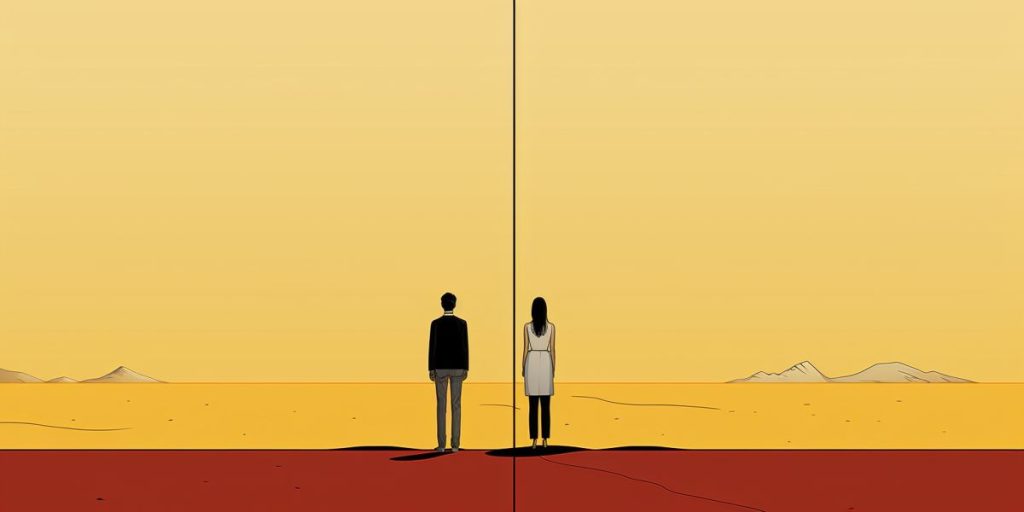Northern Cyprus is grappling with deepening economic disparity, as 15% of the population lives below the poverty line and the income gap widens. The stagnant GDP, high inflation, and vanishing middle class further exacerbate the situation, impacting social structures and democratic processes.
What are the main economic challenges in Northern Cyprus?
Northern Cyprus faces deepening economic disparity with 15% of the population below the poverty line, a widening income gap, and a stagnant GDP. The Gini coefficient stands at 0.37, signaling rising inequality. Minimum wages fall below the hunger threshold, inflation is high, and the middle class is fading, which impacts social structures and democratic processes.
The Poverty Divide
In the northern regions of Cyprus, a pattern of increasing economic disparity is emerging. A recent household budget survey has disclosed that nearly 15% of the population lives below the poverty line. However, when applying the measurement criteria of European Union member states, this figure jumps to 22.8%. Such statistics place northern Cyprus in a category with Romania and Bulgaria, where significant portions of their populations also struggle under the weight of poverty.
Income Inequality on the Rise
The survey further reveals a widening gap between the wealthy and the impoverished. The Gini coefficient, a standard economic metric for measuring income inequality, stands at 0.37. A coefficient above 0.4 typically signals significant income disparities, potentially leading to social and political unrest. This inequality has become so pronounced that Mustafa Besim, a local economist, has remarked on the vanishing middle class and the growing wealth of the affluent.
Stagnant GDP and a Fading Middle Class
GDP per capita in the north has been stagnant for 15 years, hovering around $14,000, while income distribution equality has worsened. Besim points to the previous Gini coefficient of 0.33, measured in 2015, as evidence of this troubling trend.
The Hunger Threshold Challenge
Compounding the issue is the hunger threshold, a benchmark for the minimum income required to afford an adequate diet. The Cyprus Turkish Civil Servants Union (Ktams) has calculated this threshold at approximately €557 for a family of four, while the minimum wage falls short at about €501. Those earning this wage battle to feed their families adequately, encapsulating a dire economic situation.
Inflation, the Core Culprit
Inflation has been identified as a core factor exacerbating income distribution issues. Since 2021, the Turkish Lira’s value has plummeted, leading to heightened prices for goods in an import-reliant economy. As a result, those with lower or fixed incomes are finding it increasingly difficult to maintain their standard of living, while their foreign currency debts grow larger still.
The Real Estate and Construction Paradox
Despite the gloomy economic landscape, sectors such as construction and real estate have seen significant investment. With vast numbers of homes being built for foreign investors, the economic benefits seem disproportionately skewed. It’s estimated that the unregistered economy could constitute as much as 80% of total economic activities. The absence of effective public policies, reliable statistics, and an unregulated market are factors that exacerbate the unequal distribution of wealth.
Social Repercussions
The social implications of this economic disparity are far-reaching. As the middle class dwindles and focuses its spending on basic necessities, investment in education, arts, and culture declines. This shift threatens to weaken the societal fabric and democratic structures due to decreased scrutiny and criticism of those in power.
A Glimpse Into Personal Stories
Citizens like Hamit Manga, who works an extra job beyond his minimum-wage earning to support his family, and Mustafa Altinkalb, who speaks of the impossibility of savings, illustrate the harsh realities faced by many. The sentiment is echoed by Mehmet Kadiri’s statement that the middle class no longer exists, painting a picture of a society divided by wealth extremes.
In summary, northern Cyprus confronts significant economic challenges, with a notable income gap leading to societal changes. While some sectors experience growth, the lack of a strong middle class poses a threat to the region’s social and economic stability.
Quick Recap
- Northern Cyprus is experiencing deepening economic disparity, with 15% of the population living below the poverty line and a widening income gap.
- The Gini coefficient, a measure of income inequality, stands at 0.37, indicating rising inequality in the region.
- The stagnant GDP per capita, high inflation, and vanishing middle class exacerbate the economic challenges in Northern Cyprus.
- The minimum wages fall below the hunger threshold, making it difficult for families to afford an adequate diet.
- The social implications of this economic disparity include decreased investment in education, arts, and culture, weakening societal fabric and democratic structures.

